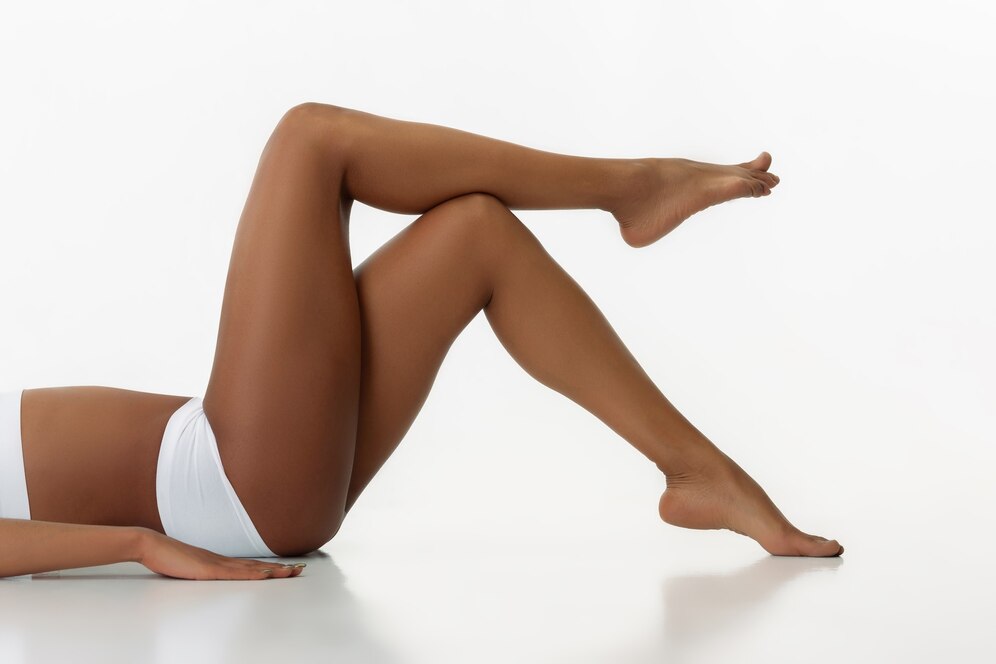Thinner and Finer Hair Regrowth
One of the remarkable benefits of body waxing is its impact on hair regrowth over time. Regular waxing not only keeps your hair-free for longer periods, but it also affects the texture and thickness of the hair that grows back. Many people notice that with consistent waxing, their hair grows thinner, finer, and less densely. Let’s delve into the details of how and why this happens.
1. Hair Follicle Weakening
The primary reason waxing leads to thinner and finer hair regrowth is that it weakens the hair follicles over time. Each time you wax, the hair is pulled out from the root, which is a more invasive process for the follicle compared to shaving or using depilatory creams.
When hair is repeatedly removed from the root, the hair follicle experiences a certain level of trauma. Over time, this repeated trauma can weaken the follicle’s ability to produce strong, thick hair. As a result, the new hair that grows back is often finer, lighter, and less coarse.
2. Hair Growth Cycle Disruption
Hair grows in cycles, and not all hair on your body is in the same phase at the same time. The main phases of hair growth include:
- Anagen (growth phase)
- Catagen (transitional phase)
- Telogen (resting phase)
Waxing is most effective when done during the anagen phase, as this is when the hair is actively growing and firmly attached to the follicle. By removing hair during this phase, waxing can disrupt the natural growth cycle, causing the follicle to produce a weaker hair strand during the next cycle.
This disruption is more pronounced with regular waxing sessions, as the follicle has less time to recover and produce strong hair. Over time, this leads to a reduction in hair thickness and density.
3. Reduction in Hair Density
Another effect of regular waxing is a noticeable decrease in hair density. As the hair follicles become weaker, some of them may stop producing hair altogether. This doesn’t mean that waxing will result in permanent hair loss, but rather that the areas you wax frequently may grow back with less hair.
For instance, after months or years of consistent waxing, you might find that your legs, arms, or bikini area have significantly fewer hairs growing back, and the ones that do are much finer and less visible. This reduction in hair density is particularly desirable for those who want to minimize the appearance of body hair over time.
4. Slower Hair Regrowth
With weaker follicles and finer hair, the regrowth process also tends to slow down. Thinner, finer hair takes longer to become noticeable on the skin’s surface, which means you can go longer between waxing sessions. This slower regrowth is a key advantage of waxing, as it allows you to enjoy smooth skin for an extended period without the need for frequent maintenance.
5. Less Noticeable Regrowth
The hair that regrows after waxing is not only thinner and finer but also less noticeable. Thinner hair has a softer texture and a lighter color, making it less visible against the skin. This is in stark contrast to the sharp, dark stubble that often appears just days after shaving.
For those with darker or coarser hair, this benefit is particularly significant. Waxing can help reduce the contrast between hair and skin, leading to a smoother, more even appearance that doesn’t require constant upkeep.
6. Improved Skin Texture
As your hair becomes finer and less dense, you’ll also notice an improvement in your skin’s texture. With fewer, finer hairs growing back, your skin will feel smoother to the touch. This is especially true for areas like the legs, arms, and face, where coarse hair can create an uneven or rough texture.
By regularly waxing these areas, you can maintain a softer, more refined skin texture that enhances your overall appearance.
7. Long-Term Hair Management
For those who are committed to long-term hair management, waxing offers a strategic advantage. The cumulative effects of regular waxing—thinner, finer, and slower regrowth—mean that you’ll spend less time and effort on hair removal over the years. As your hair becomes less of a concern, you can enjoy the benefits of smooth, hair-free skin without the hassle of frequent touch-ups or the discomfort of rough stubble.




0 Comments